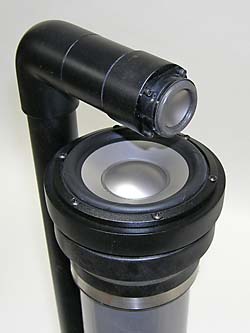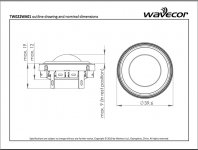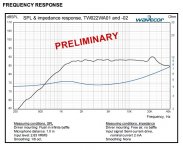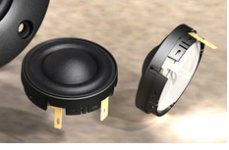Hi, i looked up his site too several times and find it usefull as well. Where i have problems with is the ratings he gives. That can give an otherwise good product a bad reputation that uses a driver that was rated poorly.
The driver alone does not tell the whole story.
Of cause you can not make a purse from a pigs ear.
The driver alone does not tell the whole story.
Of cause you can not make a purse from a pigs ear.
Hi, i looked up his site too several times and find it usefull as well.
Where i have problems with is the ratings he gives. That can give
an otherwise good product a bad reputation that uses a driver
that was rated poorly.
The driver alone does not tell the whole story.
Of cause you can not make a purse from a pigs ear.
Hi,
You may be right about a small DIY company and that has happened,
not that he gave it a poor rating, he didn't say it was utterly brilliant.
But its part of the terms and conditions of submitting drivers for testing.
Most drivers live or die on being fitted to commercial speakers and I
don't think Z has that much real influence, except for DIY diehards.
e.g. : Parts Express DIY Project
There are so many things about this I don't like Z's tweeter rating
is just another piece of the puzzle, not the be all and end all.
Will Z's rating stop people buying all the bits ? Not at all IMO.
rgds, sreten.
A good dish can be made from pigs ear....The driver alone does not tell the whole story.
Of cause you can not make a purse from a pigs ear.
In any case, it's best to use the best driver one can afford because that is the final limit on how good the design can get.
Hello,
Is that tear drop shaped tweeter for an organic visual appearance or to reduce diffraction. The sphere has a similar visual appearance and no sharp edges to cause diffraction?
It seems that as frequencies go higher the tweeter will have a narrowing lobe and the edges if any become less important or at least having a lesser impact to the lobeing of the acoustic image.
Or to put the question a different way; if the tweeter is mounted in an infinitely large flat panel there are no edges to cause diffraction, how will the performance be different from a tweeter mounted in a small sphere or teardrop?
DT
All just for fun!
Is that tear drop shaped tweeter for an organic visual appearance or to reduce diffraction. The sphere has a similar visual appearance and no sharp edges to cause diffraction?
It seems that as frequencies go higher the tweeter will have a narrowing lobe and the edges if any become less important or at least having a lesser impact to the lobeing of the acoustic image.
Or to put the question a different way; if the tweeter is mounted in an infinitely large flat panel there are no edges to cause diffraction, how will the performance be different from a tweeter mounted in a small sphere or teardrop?
DT
All just for fun!
Hello,
Is that tear drop shaped tweeter for an organic visual appearance or to reduce diffraction. The sphere has a similar visual appearance and no sharp edges to cause diffraction?
It seems that as frequencies go higher the tweeter will have a narrowing lobe and the edges if any become less important or at least having a lesser impact to the lobeing of the acoustic image.
Or to put the question a different way; if the tweeter is mounted in an infinitely large flat panel there are no edges to cause diffraction, how will the performance be different from a tweeter mounted in a small sphere or teardrop?
DT
All just for fun!
Hi,
Zaph|Audio
FWIW the tweeter measures laudably flat when used as intended
and one could expect more distortion as it will be working harder
with its wider dispersion at the bottom end of its range, but the
performance as you go lower than 4kHz does take a progressive
nosedive, which does make it difficult to use for some 2-ways.
Compare the lower range distortion to the Vifa next to it.
rgds, sreten.
Soon, I am a bit limitted in the choices i have. The VIVA OX tweeter meets my requirements well. I wanted to use a 19mm dome in a tiny cabinet. When this thread proceeds you will see that i will use a quite high crossover frequency if posible. The Scan wideband is very extended and has good dispersion up to a point. The VIVA OX has some "nosedive" ( i have heard that phrase for loudspeakers here the first time, i though it was a word from aviation ) around 2kHz and recovers somewhere deeper. If i can avoid that region with a 5kHz xover i will be fine i hope.
A tweeter put on a wide baffle compared to a tweeter in "open air" will have a very different off axis response. The total energy will be the same though under the conditions that the baffle is very wide in one case and the cabinet very small in the other case.
A tweeter put on a wide baffle compared to a tweeter in "open air" will have a very different off axis response. The total energy will be the same though under the conditions that the baffle is very wide in one case and the cabinet very small in the other case.
Hi,
To get back to the topic of low diffraction and / or wide dispersion speakers
I guess SL's Pluto should be mentioned. It doesn't do it to the highest treble,
but its certainly a "low diffraction" "wide dispersion" design, is it not ?
PLUTO-2.1 omni-directional loudspeaker

Don't discuss it here, that not the point, but for those interested
the "Concepts" section might be interesting background reading.
rgds, sreten.
To get back to the topic of low diffraction and / or wide dispersion speakers
I guess SL's Pluto should be mentioned. It doesn't do it to the highest treble,
but its certainly a "low diffraction" "wide dispersion" design, is it not ?
PLUTO-2.1 omni-directional loudspeaker

Don't discuss it here, that not the point, but for those interested
the "Concepts" section might be interesting background reading.
rgds, sreten.
Just one anekdote Sreten. When i asked Siegfried why he has not put the tweeter exactly over the midle of the midrange he told me that he got a very ragged response that way, due to reflexions. He has then put the tweeter more forward and uses a allpass instead for alignement.
Just one anekdote Sreten. When i asked Siegfried why he has not put the tweeter exactly over the midle of the midrange he told me that he got a very raged response that way, due to reflexions. He has then put the tweeter more forward and uses a allpass instead for alignement.
Hi.
Yes. given the c/o point they don't have to be that close (with inevitable
mid/treble reflections) do they ? There are always different approaches.
You could offset the mid/tweeter to one side and increase spacing.
rgds, sreten.
Last edited:
At this frequency range, I wonder whether this might be a better option.Soon, I am a bit limitted in the choices i have. The VIVA OX tweeter meets my requirements well. I wanted to use a 19mm dome in a tiny cabinet. When this thread proceeds you will see that i will use a quite high crossover frequency if posible. The Scan wideband is very extended and has good dispersion up to a point. The VIVA OX has some "nosedive" ( i have heard that phrase for loudspeakers here the first time, i though it was a word from aviation ) around 2kHz and recovers somewhere deeper. If i can avoid that region with a 5kHz xover i will be fine i hope.
A tweeter put on a wide baffle compared to a tweeter in "open air" will have a very different off axis response. The total energy will be the same though under the conditions that the baffle is very wide in one case and the cabinet very small in the other case.
Beston RT003C Round Ribbon Tweeter | Parts-Express.com
measured these a few years ago.
An externally hosted image should be here but it was not working when we last tested it.
Are you looking for a very wide dispersion or a limited uniform beam dispersion?
It's been well known that the smaller the baffle size, the easier it is for the speakers to be aurally invisible.
Hello,<snip>
It's been well known that the smaller the baffle size, the easier it is for the speakers to be aurally invisible.
It will be interesting to see the limits of this assumption explored.
DT
All just for fun!
Soon, the Beston is not extended enough in the lower reaches for my xover aproach.
The spec sheet says it needs a third order xover.
Anyhow, thanks for searching for alternatives.
DualTriode, the Stoll speakers pull that trick when setup right.
This is the very reason i opened up this thread.
This may be not to everybodies taste but i like the result very much.
The spec sheet says it needs a third order xover.
Anyhow, thanks for searching for alternatives.
DualTriode, the Stoll speakers pull that trick when setup right.
This is the very reason i opened up this thread.
This may be not to everybodies taste but i like the result very much.
That's easy. The limit is reached, when the theoretically needed baffle size (for a target frequency) becomes smaller than the practically available driver size/diameter.It will be interesting to see the limits of this assumption explored.
Rudolf
Hello,That's easy. The limit is reached, when the theoretically needed baffle size (for a target frequency) becomes smaller than the practically available driver size/diameter.
Rudolf
Slow down big fella, it may not be that simple! Theory and assumptions may work well when we are in the middle of familiar ground, get close to the edges and things may not be as predictable as we thought. You know the water analogies for electronics, this time for speakers i will change up and use steam. Good old dry steam should follow the basic gas law we learned in school; PV=NRT. The law is close as far as theories go but for building boiler and piping systems no cigar; empirical data rules.
DT
All just for fun!
DT,Hello,
Slow down big fella, it may not be that simple!
I was more or less referring to Soon's comment which you had answered to. But of course you are right. What I was stating was sort of the brick wall WRT baffle size. Even the smallest tweeters available will leave a harmonic radiation pattern somewhere above 5 kHz. Luckily that's where our ears start to loose their capability to detect phase differences.
From my personal experience the main threat for "invisibility" will be distortion. Without a wide baffle those small tweeters have a hard time to reach high SPL levels at desirable low frequencies. So the recipe sounds simple: Get the most compact driver with the highest undistorted SPL level at the lowest Xover frequency. Trouble is: Those preconditions are compromising each other.
I am curious at which compromise Joachim will end.
This tweeter could work too but it is a little bigger. I whould cut back the frontplate as much as i can.
http://www.tb-speaker.com/detail/1230_04/25-1933s.htm
http://www.tb-speaker.com/detail/1230_04/25-1933s.htm
- Status
- This old topic is closed. If you want to reopen this topic, contact a moderator using the "Report Post" button.


